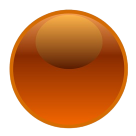The Indian Space Research Organisation (Isro) said today hours after launching its Small Satellite Launch Vehicle (SSLV), carrying EOS-2 and Azaadisat satellites, from Satish Dhawan Space Centre in Sriharikota, that the satellites were no longer usable as they deviated from their circular orbit. It said that a committee would analyse the issue and following its recommendations, the Isro will come back with SSLV-D2 soon.
"With further correction, we will come back with SSLV-D2 very soon and are hoping that the second attempt will be completely successful in placing the satellites in low earth orbit," said Isro chairman Sreedhara Panicker Somanath.
The launch using the vehicle can be carried out within a week. Somanath said that the vehicle could be integrated in two days, tested for the next two, with rehearsal and launch in another two days. This was achieved during the current mission, he had said yesterday.
How SSLV-D1/EOS-02 was lost
Isro said the maiden SSLV-D1 placed the satellites into the 356 km x 76 km elliptical orbit instead of the 356 km circular orbit. It explained that the satellites were no longer usable after identifying the issue. "Failure of a logic to identify a sensor failure and go for a salvage action caused the deviation," it tweeted.
Earlier, the space agency said the "orbit achieved was less than expected, which makes it unstable".
All the stages of the launch performed normally, Isro said, adding that both satellites (Earth Observation Satellite and Azaadisat) were injected, but the orbit achieved was less than expected, which makes it unstable.
Soon after the launch, Isro chairman Somanath said the SSLV-D1/EOS-02 mission had suffered a data loss in its terminal phase.
Somanath said: “We had in the terminal phase of the mission some data losses occurring and we are analysing the data. And, we will come back on the status of the satellites as well as the vehicle performance soon.”
"All stages performed as expected. The first stage performed and separated; the second stage performed and separated, the third stage also performed and separated, and in the terminal phase of the mission, some data loss is occurring and we are analysing the data and we will come back on the status of the satellites as well as the vehicle performance soon," said the Isro chairman from the Mission Control Centre, minutes after the launch.
The maiden Small Satellite Launch Vehicle lifted off the first launch pad of Satish Dhawan Space Centre in Sriharikota at 9.18 AM after the countdown for the mission began at 2:26 AM.
SSLV specifications
The 120-tonne SSLV, which is an all-solid stage rocket measuring 34 m in height and 2 m in diameter, is capable of launching mini, micro or nanosatellites weighing 10 to 500 kg to 500 km planar orbit. The SSLV is a three-stage (solid propulsion) vehicle.
The SSLV, which uses three solid fuel-based stages and a liquid fuel-based velocity trimming module (VTM) to place the satellite in orbit, was designed keeping in mind the quick turnaround time needed for commercial launch.
The key features of the SSLV are its low cost, low turnaround time, flexibility in accommodating multiple satellites, launch-on-demand feasibility, the minimal launch infrastructure requirements.
The rocket can be made within one week because of many innovative features introduced. These include modular systems, simplified pyro circuit and modular feature for separation system, multi-satellite adapter deck, miniature low-cost avionics with commercial off-the-shelf components and an on-board computer with rapidly reconfigurable check-out system with a minimum ground interface.
Some of the new systems introduced in the launch vehicle include the SS1 motor, which is the third largest solid booster of Isro, the SS3 motor, which is a new composite upper stage solid motor and the liquid propulsion-based terminal stage for precise injection of satellites.
Second satellite EOS-2
The 145 kg EOS-2 is an experimental imaging satellite with a short turn-around time and a high spatial resolution. The EOS-02 belonged to the microsatellite series of spacecraft.
Azaadisat is an 8U Cubesat weighing around 8 kg. It carries 75 different payloads each weighing around 50g that conducts Femto-experiments. The payloads were built by girl students from rural regions across the country. Femto is (used in units of measurement, denoting a factor of 10−15.
The payloads include a UHF-VHF transponder working in ham radio frequency to enable voice and data transmission for amateur radio operators, a solid state PIN diode-based radiation counter to measure the ionising radiation in its orbit, a long-range transponder and a selfie camera.



